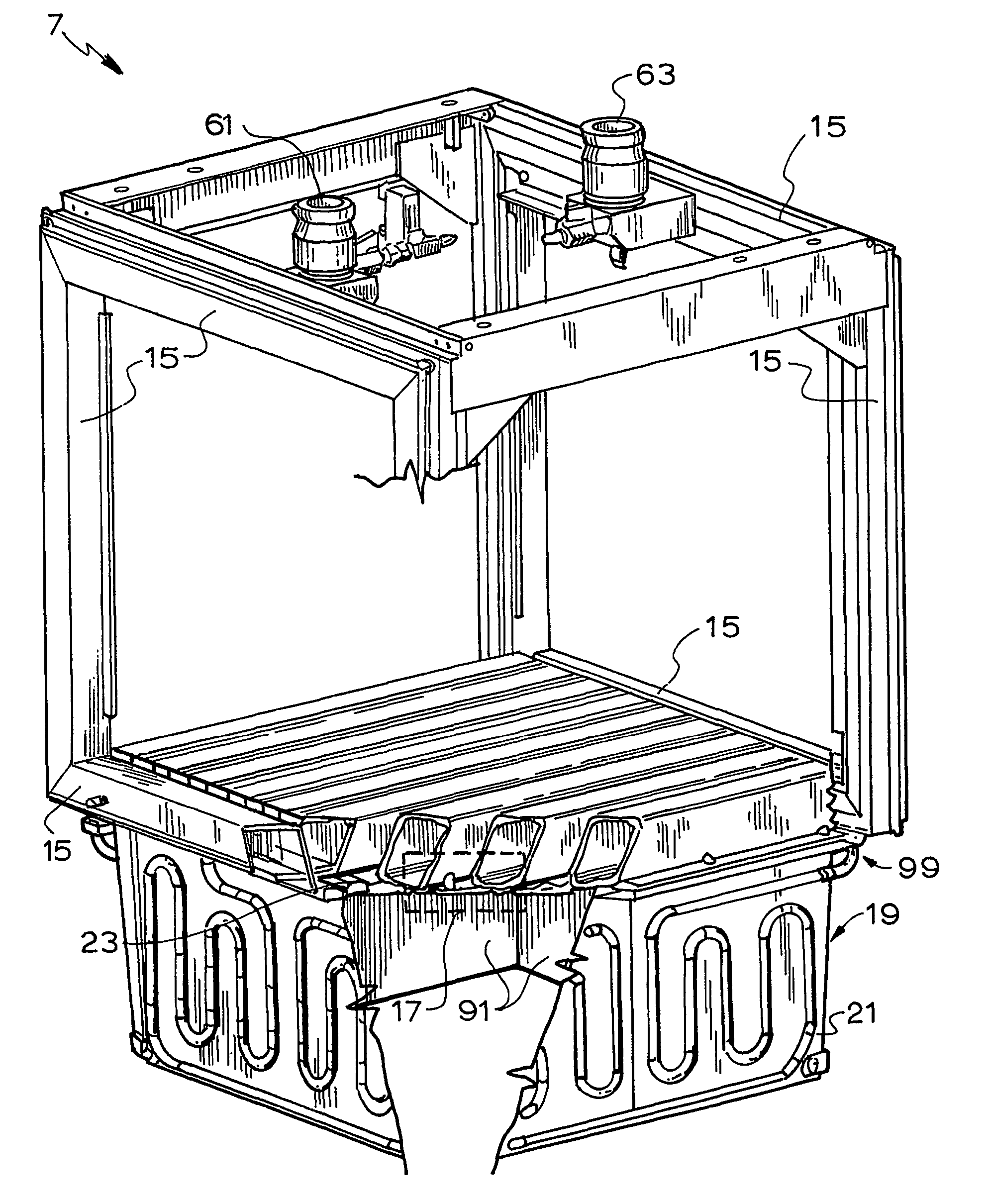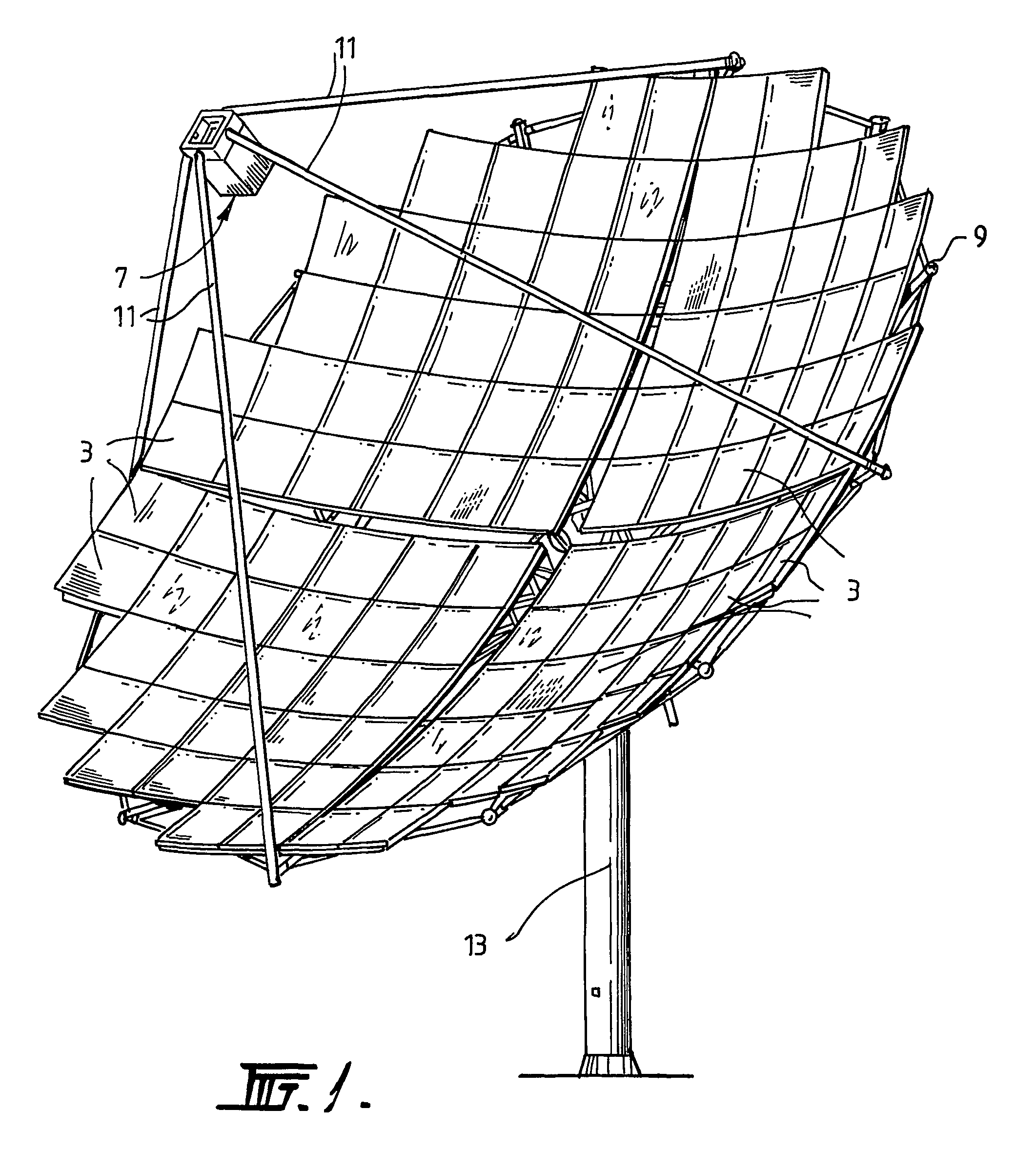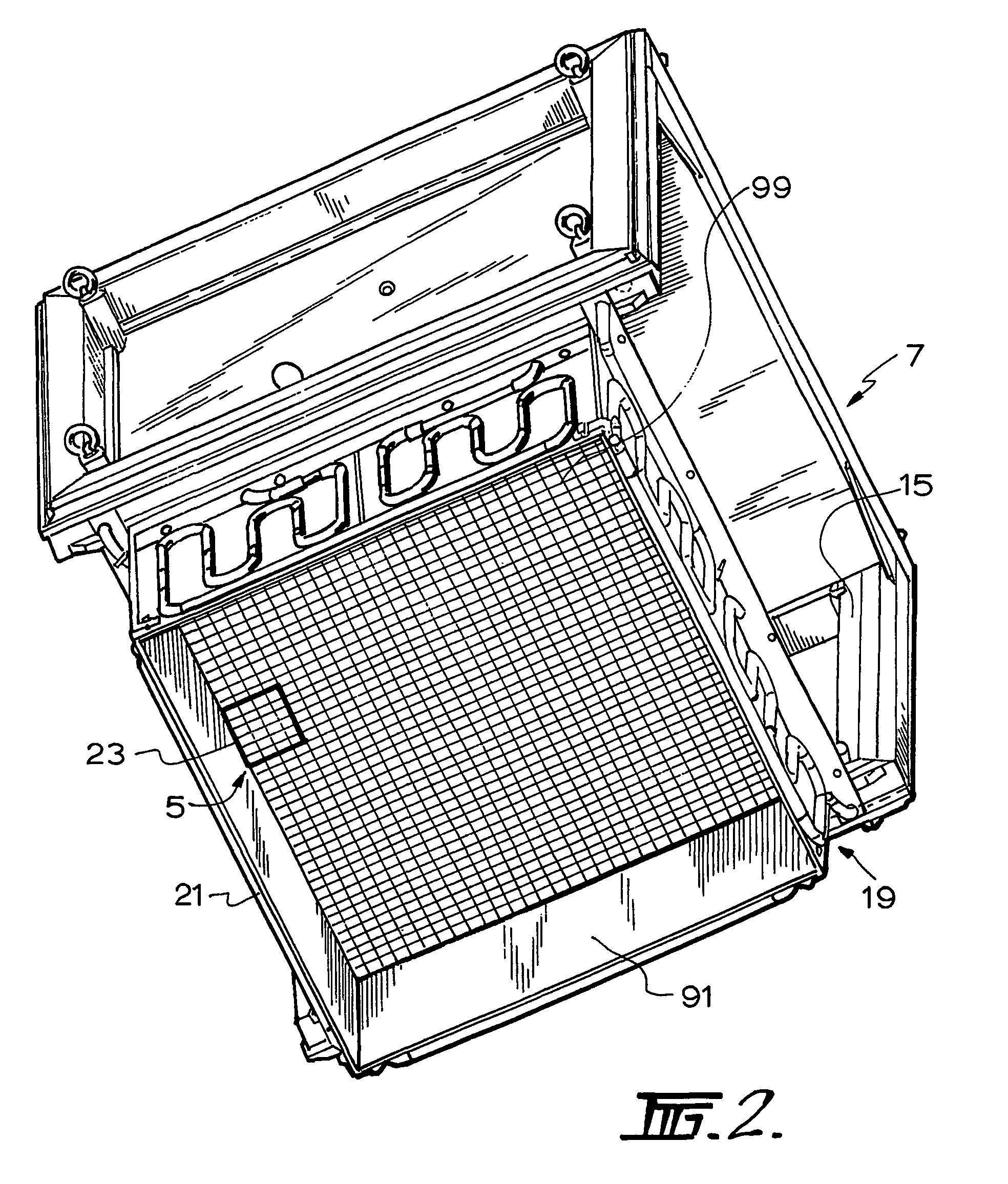Cooling circuit for receiver of solar radiation
a solar radiation and cooling circuit technology, applied in the field can solve the problems of reducing the available contact surface area of solar radiation receivers, and reducing the efficiency of photovoltaic cells, so as to achieve the effect of improving heat transfer, increasing the available contact surface area, and high heat transfer
- Summary
- Abstract
- Description
- Claims
- Application Information
AI Technical Summary
Benefits of technology
Problems solved by technology
Method used
Image
Examples
Embodiment Construction
[0072]The solar radiation-based electric power generating system shown in FIG. 1 includes a parabolic array of mirrors 3 that reflects solar radiation that is incident on the mirrors towards a plurality of photovoltaic cells 5.
[0073]The cells 5 form part of a solar radiation receiver that is generally identified by the numeral 7.
[0074]As is described in more detail hereinafter, the receiver 7 includes an integrated coolant circuit. The surface area of the mirrors 3 that is exposed to solar radiation is substantially greater than the surface area of the photovoltaic cells 5 that is exposed to reflected solar radiation. The photovoltaic cells 5 convert reflected solar radiation into DC electrical energy. The receiver 7 includes an electrical circuit (not shown) for the electrical energy output of the photovoltaic cells.
[0075]The mirrors 3 are mounted to a framework 9. The mirrors and the framework define a dish reflector.
[0076]A series of arms 11 extend from the framework 9 to the rec...
PUM
 Login to View More
Login to View More Abstract
Description
Claims
Application Information
 Login to View More
Login to View More - R&D
- Intellectual Property
- Life Sciences
- Materials
- Tech Scout
- Unparalleled Data Quality
- Higher Quality Content
- 60% Fewer Hallucinations
Browse by: Latest US Patents, China's latest patents, Technical Efficacy Thesaurus, Application Domain, Technology Topic, Popular Technical Reports.
© 2025 PatSnap. All rights reserved.Legal|Privacy policy|Modern Slavery Act Transparency Statement|Sitemap|About US| Contact US: help@patsnap.com



